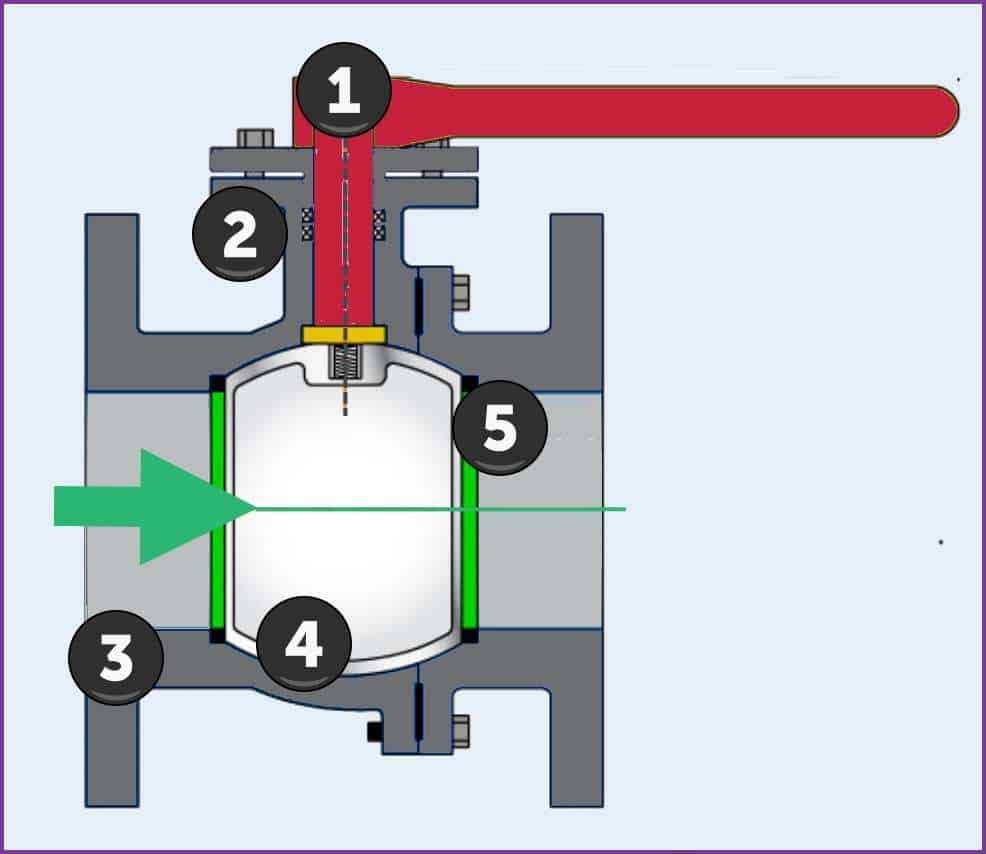 A ball valve is a quarter-turn shut-off mechanism that controls the flow of fluids through a rotating ball that has a bore through it.
A ball valve is a quarter-turn shut-off mechanism that controls the flow of fluids through a rotating ball that has a bore through it.
The ball valve is in the open position when the bore is aligned with the flow, allowing fluid to flow through it. When the bore is rotated 90 degrees from the flow path, the valve is closed, and the flow is blocked
For certain applications, it is necessary that the valves are approved or certified, e.g., for use in drinking water and gas.
Ball valves are very reliable and have a long lifetime and can be operated pneumatically, electrically or manually.
Parts of a Ball Valve

A ball valve is comprised of the following main components:
- Valve Steam. Number 1 of the above figure.
The valve stem is a rotary shaft connecting the internal ball to the outside lever which when turned rotates the ball.
- O-ring. Number 2 of the above figure.
The o-ring is used to create a seal between the stem and housing of the valve. NBR (Nitrile rubber) is the most commonly used material for the O-ring.
- Valve body. Number 3 of the above figure.
The valve body protects the internal components and has connection points on the inlet/outlets. Brass, stainless steel and PVC are the most commonly used housing materials.
- Rotary ball. Number 4 of the above figure.
The spherical rotary ball with a bore allows or blocks the passing of the media through the pipe. They are usually made of stainless steel, PVC, chrome plated steel or chrome plated brass. The ball design is categorized as floating or trunnion based on their design and support.
- Valve seats. Number 5 of the above figure.
They act as the seal between the ball and the housing of the valve. The most commonly used material for seats is Teflon, but other synthetic materials or metals. Metal seals are widely used for high-pressure and temperature services.
Types of Ball Valve
Ball valves can be classified according to multiple criteria:
- Assembled of housing
- Ball access for maintenance
- Floating or supported ball valve
- Reduced, full or V-shape Bore design
- Number of ports
Assembled of housing
The valve housing may be assembled in one-piece, two-piece or three-piece designs.
Single-piece
Single-piece design ball valves In the single-piece design ball valve, the body will be cast /forged into a single piece. The insertion of the ball will be through the end of the body and is held in position by the body insert. This design has the unique advantage of eliminating the possibility of external leaks in the atmosphere via bolted body joints
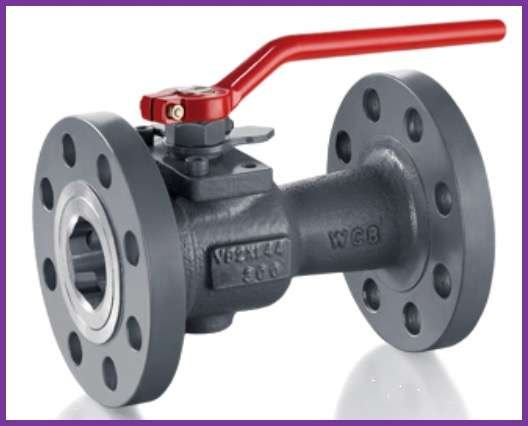
Two-piece
The parts in two-piece valves have threaded connections. Thus, they can be disassembled for maintenance purpose. But the valve needs to be removed completely from the pipe to separate the parts for servicing and maintenance purpose
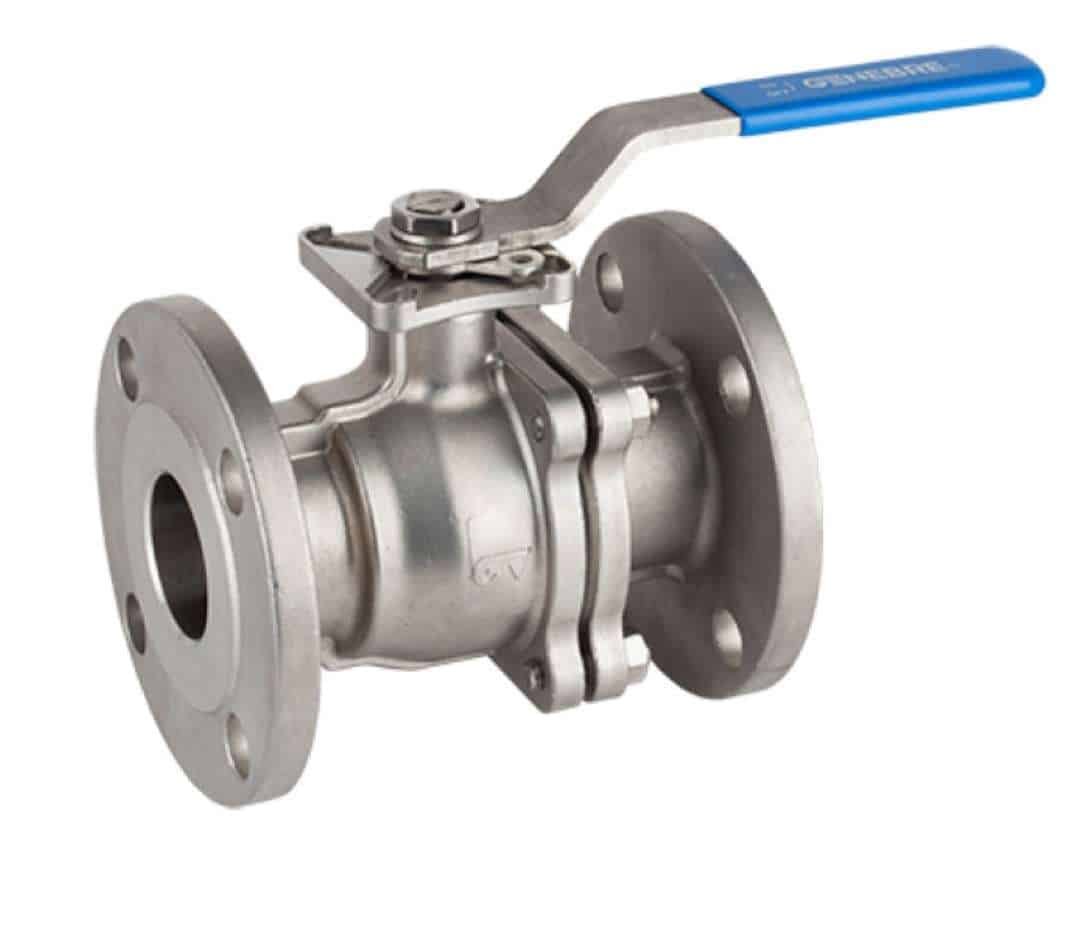
Three-piece
The parts in a three-piece valve are generally clamped by a bolt connection. The valve is not required to be removed completely from the pipe for maintenance purpose. This is the most expensive valve design option, but offers the best solution for sanitary applications.

Access for maintenance
Top-entry
Entry from the top.
Being able to remove the body cover from the top allows access to the internal parts of the valve for assembly, disassembly, repair or maintenance without having to remove the valve from the pipeline.

End entry
Side entry or ends entry ball valve design.
In the case of a side entry ball valve, the ball is assembled from the side part. They normally have two pieces or three pieces of the body. Each part of the body is assembled by a bolt/stud similar to joining a two-piece of flanges.
Split body
The valve body is divided into two or three parts
Welded body
The fully welded body is used for high pressure and temperature services. The welded-body ball valve design eliminates the body flanges, reduces the risk of leakage, and increases the stress resistance of the pipeline.
Welded ball valves guarantee no leakage for the life of the valve and require no operational maintenance. This can be a very important factor, especially for ball valves installed in underground or subsea pipelines. This design is also chosen within dangerous fluids.
Floating or supported ball valve
Floating ball design
The valve seats provide support to the ball to accommodate for different temperature applications. This is the most commonly used ball design.
Trunnion ball design
The ball is supported on the bottom and top to reduce load on the valve seats. This design is used in high quality valves to provide reliable sealing in both high and low-pressure applications.
View figure below
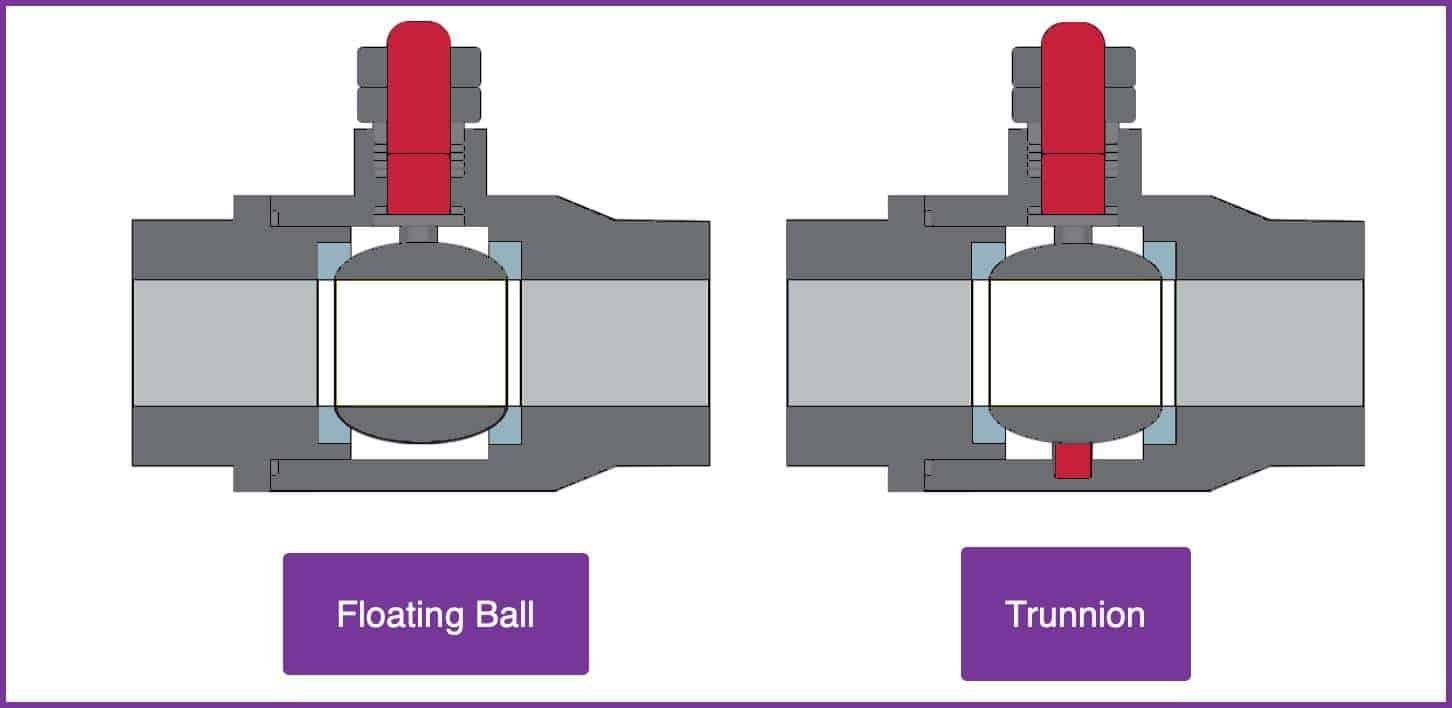
Reduced, full or V-shape Bore design
Reduced bore
The bore size of these valves is smaller than the diameter of the inlet/outlet connections. Thus, there is a friction loss in the system. However, the losses are still small in comparison to other valves. Most ball valves use a reduced bore design.
Full bore
The bore size of these valves is the same size as the diameter of the pipe. Thus, there is no extra friction loss and they are also easy to clean. However, due to its larger diameter, the cost is slightly higher and not required for most application, for which standard reduced bore is sufficient.
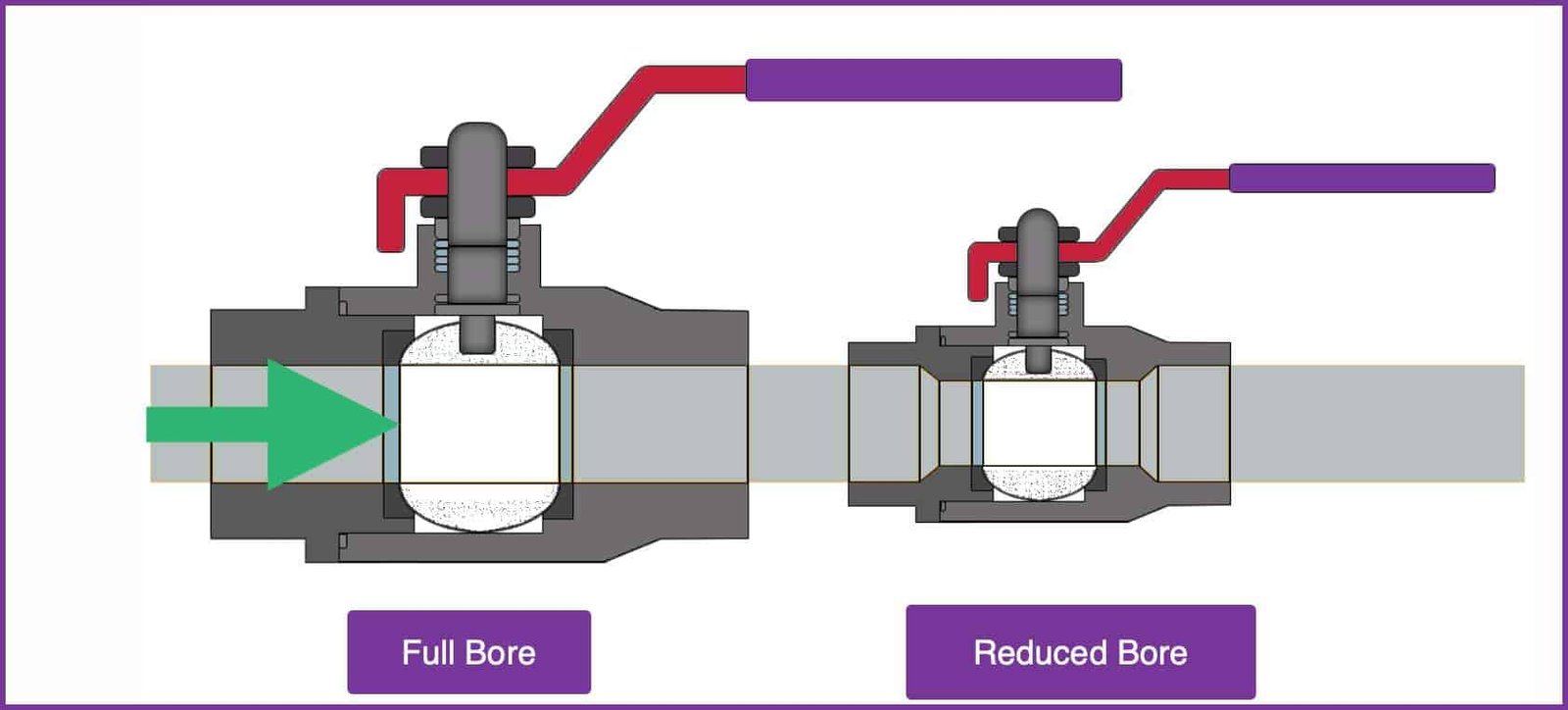
V-shaped bore
The bore in these valves have a V-shaped profile. Thus, a precise flow rate can be achieved by rotating the ball. A linear flow can be achieved by optimizing the profile of the V-shaped bore.

Number of ports
The valve may have two, three or even four ports (2-way, 3-way or 4-way)
Ball Valve End Connections
The type of ball valve ends is as follows:
- Flanged ends with raised face or ring joint face
- Threaded ends
- Socket weld ends
- Butt-weld ends
Note: Soft as well as metal seated butt-weld end valves shall be provided with butt-weld pup pieces. This avoids damage to the ball valve seat as well as soft seal materials due to welding heat.
The pup piece length shall be:
- 200mm for sizes up to 2” NB
- 400mm for up to 12” NB size
- 800mm above 12” NB sizes
Pros of ball valves
- Quarter turn straight thru valve / fast opening & closing
- Tight Shutoff as well as very easy to use
- Applied as isolation valve (on and off)
- Suitable for Emergency shutdown conditions
- Multi-design flexibility
- Compact, economical designs
- Suitable in high pressure operating conditions.
- Long life expectancy.
- Suitable for various industrial applications.
Disadvantages of Ball Valves
- Not suitable for throttling
- Fluid entrapped in the body cavity.
- Limited operating temperature range.
See the next publication, a complete review of the characteristics and the most common types of globe valves
Ball Valve – Calculate Man Hours